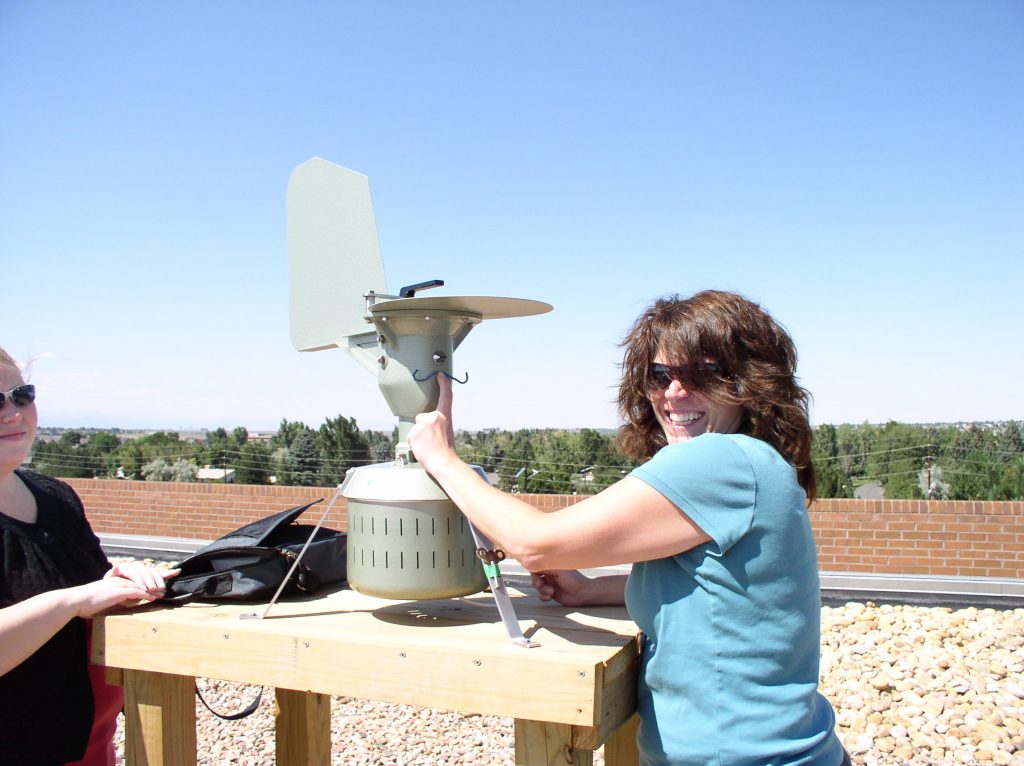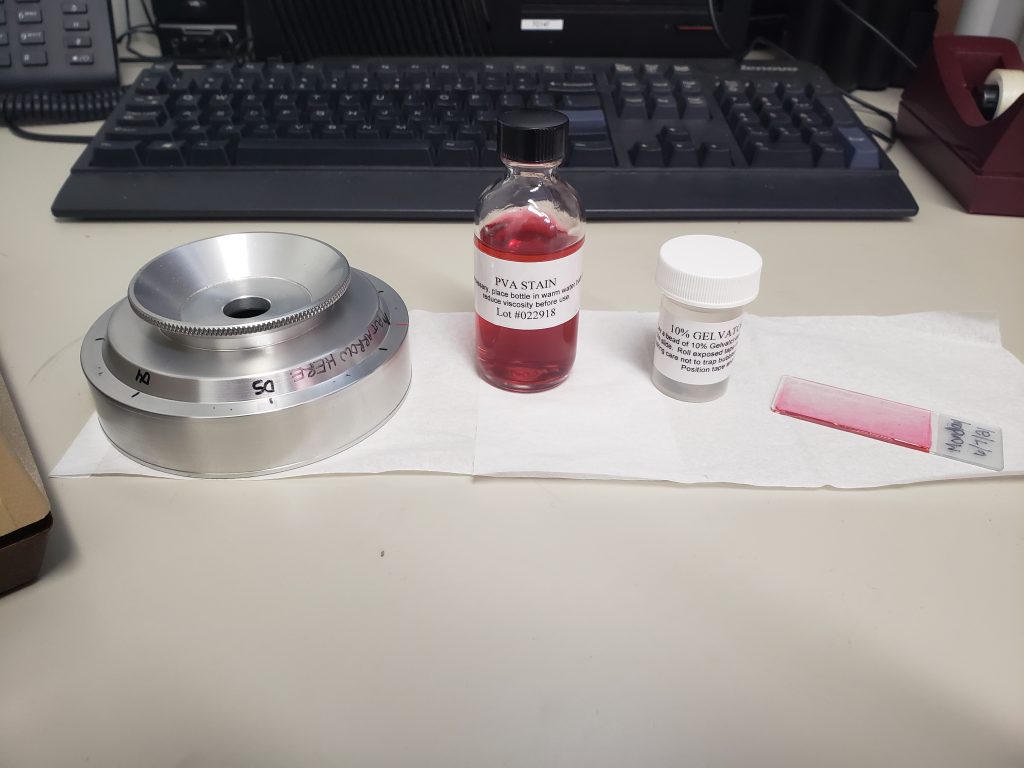Did you know that Colorado Allergy & Asthma Centers© is the only certified pollen counter north of Colorado Springs? That’s right, we provide you with the pollen counts specific to our area and climate. Because of that, we thought you might like to know a little bit more about the collection process.
Certification
The process of collecting and counting pollen is a lot more involved (and scientific!) than you might think. People who count pollen must be certified by the National Allergy Bureau and the American Academy of Allergy, Asthma, & Immunology. To get certified, multiple tests must be passed and pollen from all over the country must be identified properly. Once certified, you only have to count the pollen in your region.

Collecting & Counting Pollen
Counting pollen is a step-oriented process that can take anywhere from 1 to 4 hours. This does not include the time it takes for the specialized machine to collect all the pollen. There are a couple different machines that are used to collect pollen, but the one we use here at CAAC is called the “Burkard Spore Trap” (Burt). This little machine looks like something Nasa would send to Mars, but instead of exploring space it gets to stay up on the roof of our Denver Lowry clinic.

Burt is basically a little vacuum chamber that sucks in outside air for up to 7 days and catches all the tiny particulates that are found in that air on a wheel covered in sticky tape. The wheel must be physically changed out a few times a week and wound up like an old clock so that it moves every couple of hours to catch the pollen during each hour of the day. It moves 2 millimeters (mm) per hour, which means that a full 24 hours of pollen will be stuck onto 48 mm of the sticky tape. When it comes time to count or “read” the pollen, the tape is peeled off the wheel and cut into 48 mm sections. This is when the real science happens!

Pollen is very tiny – microscopic even. How do we see objects that are microscopic? By using a microscope. To look at the pollen under a microscope, a microscope slide must be prepared. We use a special glue to stick each 48 mm piece of tape to a microscope slide, wait at least 30 minutes for the glue to dry, then put a special pink-colored stain right on top of the surface of the tape. This special stain soaks into the membranes of the pollen, allowing us to see and differentiate pollen grains.
Once the stain is added, a thin piece of glass called a “microscope slide cover” is placed on top of the stain to spread it out over all 48 mm of pollen-covered sticky tape; the stain takes about an hour to dry. After the stain dries, the pollen slides are ready to be counted under the microscope. Only a single line, or traverse, of the microscope slide is counted, otherwise it would take hours to count pollen on a single slide.

Pollen Counts
To get an accurate number of pollen grains in a 24 hour period, we count the total number of each pollen type (trees, grass, weeds, and mold) seen on a single traverse. A special mathematical equation is then used to calculate the estimated concentration of each pollen type on the entire microscope slide. Et voila, we now have the pollen counts! Pollen counts for the current day and 2 days prior are then posted to various websites, including CAAC’s (www.coloradoallergy.com).
Having these pollen counts available allows patients to see if the pollens they are allergic to are floating around in the air. The more information at our disposal, the better prepared and able we are to take care of ourselves. Thank goodness for antihistamines and allergy shots!
Category: Uncategorized


